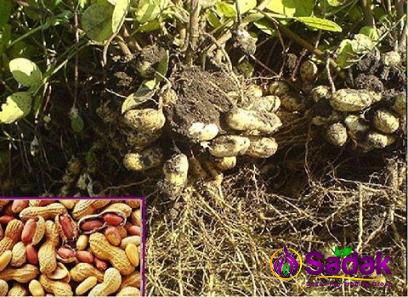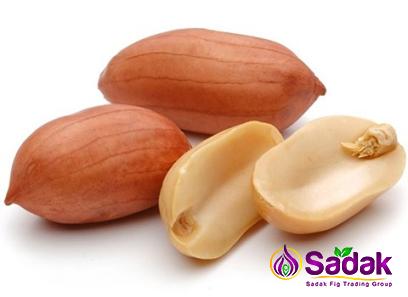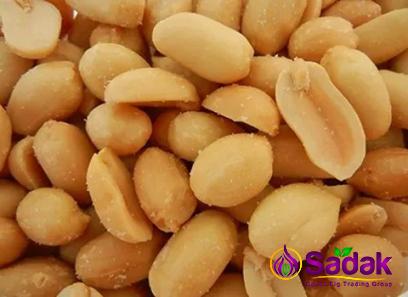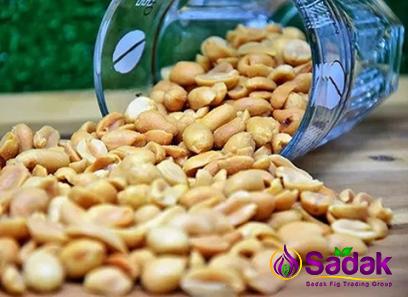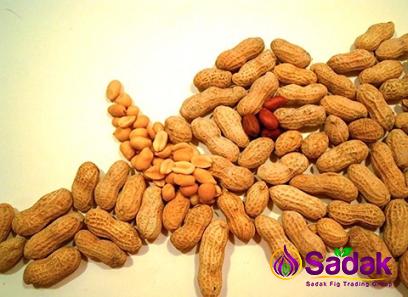Almonds are not only a popular snack but also a highly versatile ingredient in various culinary preparations. Considered a fruit of the almond tree (Prunus dulcis), almonds boast an impressive range of health benefits and culinary uses. This article aims to provide a comprehensive summary of the almond fruit type, including its botanical characteristics, nutritional composition, health benefits, various forms and uses, and the almond industry’s significance to global agriculture and economy.
Botanical Characteristics:
The almond fruit is classified as a drupe, similar to cherries, peaches, and plums. The almond tree, native to the Middle East and Mediterranean regions, is a deciduous tree that thrives in warm climates. The fruit itself consists of an outer fleshy hull surrounding a hard shell, within which the seed (almond kernel) is found. Almond trees produce fragrant pink or white flowers, which develop into the fruit after pollination.
Nutritional Composition and Health Benefits:
Almonds are known for their impressive nutritional profile. They are an excellent source of healthy fats, protein, fiber, vitamins, and minerals. A one-ounce (28g) serving of almonds provides approximately 160 calories, 6 grams of protein, 14 grams of fat (including heart-healthy monounsaturated fats), 3.5 grams of fiber, and minimal carbohydrates. Almonds are also rich in vitamin E, magnesium, calcium, and potassium.
Numerous health benefits are associated with consuming almonds. Regular almond consumption has been linked to reducing the risk of heart disease, promoting weight management, improving blood sugar control, and boosting brain health. Almonds are also beneficial for maintaining healthy skin, promoting digestion, and providing antioxidant protection due to their high vitamin E content.
Almond Forms and Culinary Uses:
Almonds are available in various forms, providing a multitude of culinary applications. Whole almonds are often consumed as a snack, added to trail mixes, or used as a topping for salads, stir-fries, and desserts. Almond butter, made by grinding almonds into a smooth paste, is a popular alternative to peanut butter and is used for spreads, baking, and smoothies.
Almond milk, a dairy-free milk alternative, can be made by blending soaked almonds with water, and is widely used by lactose-intolerant individuals or those following a plant-based diet. Almond flour, created by grinding blanched almonds into a fine powder, is an excellent gluten-free baking substitute, offering a nutty flavor and moist texture to baked goods. Almond oil, extracted from almond kernels, is utilized in culinary applications, skincare products, and traditional medicine practices.

Significance to Global Agriculture and Economy:
Almonds are a globally cultivated crop, and their production has significantly contributed to the agricultural sector. The United States, particularly California, is the largest producer of almonds, accounting for nearly 80% of the global almond supply. Spain, Iran, and Italy are also notable almond-producing countries. The almond industry plays a crucial role in supporting rural economies and providing employment opportunities in these regions.
The almond market is driven by both domestic consumption and international demand. Almonds are exported to numerous countries, primarily for snack consumption but also for use in various food manufacturing industries. The global demand for almonds continues to rise due to their health benefits, increasing popularity of plant-based diets, and their versatile culinary applications.
Conclusion:
Almonds are not just a delicious and nutritious snack but also a versatile ingredient widely used across various culinary applications. With their impressive nutritional composition and health benefits, almonds offer a range of advantages, including heart health, weight management, improved blood sugar control, and increased brain function. Whether in whole nut form, as flour, butter, milk, or oil, almonds bring a unique flavor, texture, and nutrition profile to dishes, making them a valuable addition to any diet. As the almond industry continues to thrive and expand, it remains an essential part of global agriculture and the economy.Title: Almond Industry: A Thriving Business with Growing Demand
1. Almond Market Overview:
The global almond market has experienced steady growth over the past decade, driven by increasing consumer awareness of the nutritional benefits of almonds and the versatility of their uses across different industries. The market is primarily driven by the snack consumption sector, as almonds are a popular choice for those seeking healthy and convenient on-the-go snacks. Additionally, the rising popularity of plant-based diets has contributed to the demand for almond-based products.
2. Almond Production and Supply:
The United States dominates the global almond production with California as the leading almond-growing region. The state’s Mediterranean climate provides an ideal environment for almond cultivation. California alone accounts for nearly 80% of the global almond supply. Other major almond-producing countries include Spain, Iran, and Italy. The industry faces challenges due to climate change, including droughts and unpredictable weather patterns that can impact crop yields.

3. Processing and Value Addition:
The almond industry involves various stages of processing to transform the raw almonds into value-added products. Initially, almonds are harvested, shelled, and separated from the hull. Then, they are processed through different techniques such as blanching, roasting, slicing, or grinding. Value-added products such as almond butter, almond milk, almond flour, and almond oil are created through these processing methods. This value addition contributes to the profitability of the industry.
4. Packaging and Distribution:
The packaging of almond products plays a vital role in attracting consumers and ensuring product freshness. Nuts are typically packaged in vacuum-sealed bags or cans to maintain their quality and extend their shelf life. Almond-based products such as almond milk and almond butter are commonly packaged in tetra packs or jars. The distribution of almonds occurs through various channels, including supermarkets, health food stores, online platforms, and food service providers.
5. Health Food and Snack Industry:
The demand for healthier snack options has driven the growth of the almond industry. Almonds are a well-recognized “superfood” due to their nutritional content and numerous health benefits. The increasing focus on wellness and healthy lifestyles has led to a shift in consumer preferences towards nutritious snacks, making almonds a favored choice. The health food industry’s growth has created opportunities for innovative almond-based products, such as almond protein bars and almond-based savory snacks.
6. Almond Ingredient in Food Manufacturing:
The food manufacturing industry utilizes almonds in a wide range of products, including breakfast cereals, baked goods, snacks, confectionery items, and dairy alternatives. Almonds enhance the nutritional content, texture, and flavor of these products while catering to the increasing consumer demand for natural and plant-based ingredients. The versatility of almonds allows for the creation of innovative and delicious products that appeal to various consumer segments.
7. Almond Oil in the Cosmetics Industry:

Almond oil’s skincare benefits have made it a popular ingredient in the cosmetics and personal care industry. It is known for its moisturizing properties, ability to improve skin tone and texture, and potential anti-aging effects. Almond oil is used in a wide array of skincare products, including moisturizers, lotions, soaps, and hair care products. The demand for natural and organic beauty products has further fueled the use of almond oil as a key ingredient.
8. Growing Almond Export Market:
Almonds have become a sought-after commodity in the global export market. They are exported to numerous countries, including China, India, Germany, Spain, and the Middle East, where almonds are incorporated into traditional recipes. The increasing popularity of almonds in different international cuisines has created opportunities for exporters to tap into new markets and expand the reach of almond products.
9. Sustainability Practices in Almond Farming:
The almond industry has embraced sustainability practices to mitigate environmental impacts and ensure the future viability of almond farming. Many almond producers employ water-efficient irrigation systems and implement responsible farming techniques to reduce water consumption and protect natural resources. Additionally, efforts are being made to enhance pollinator habitat and promote biodiversity, as almond trees heavily rely on honeybees for pollination.
10. Challenges and Future Outlook:
The almond industry faces several challenges, including climate change, fluctuating market prices, and potential pests and diseases. Drought conditions in almond-producing regions can impact crop yields and increase production costs. Nevertheless, the industry’s potential for innovation, coupled with growing consumer awareness of the health benefits of almonds, presents promising opportunities for future growth.
Conclusion:
The almond industry has emerged as a thriving business, capitalizing on the growing demand for healthy snacks, plant-based ingredients, and natural skincare products. With its versatile use across different sectors, including food, cosmetics, and agriculture, almonds have become an integral part of the global market. As consumers continue to prioritize health and sustainability, the almond industry is positioned for sustained growth and innovative product development.



